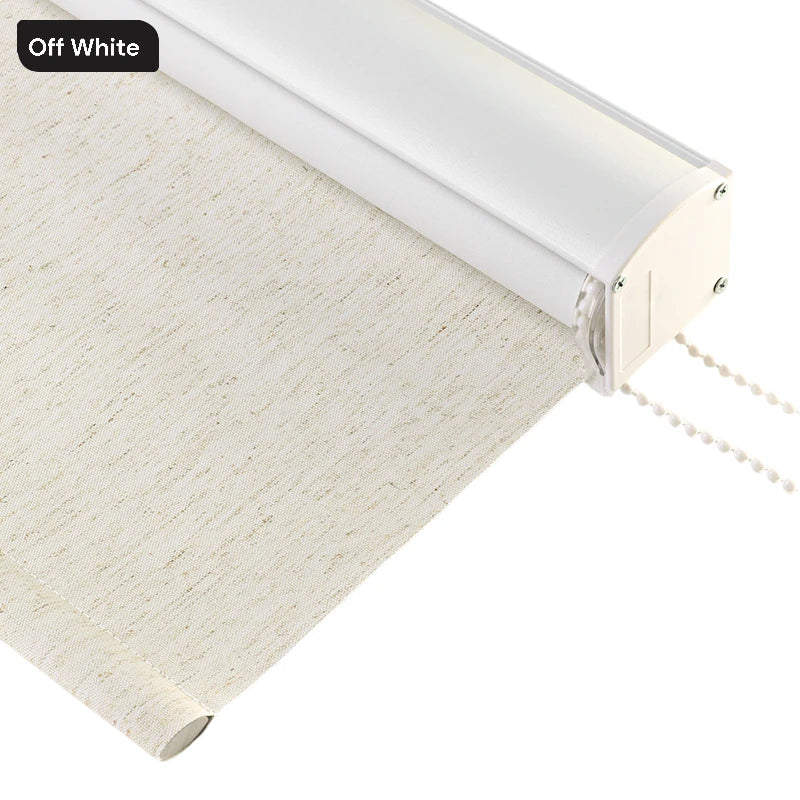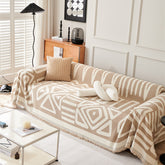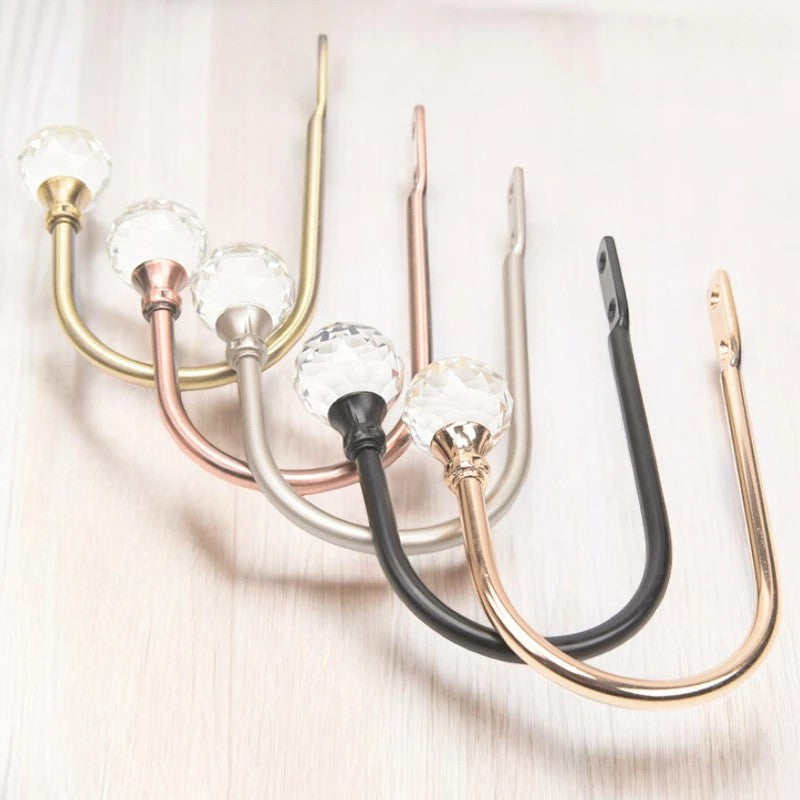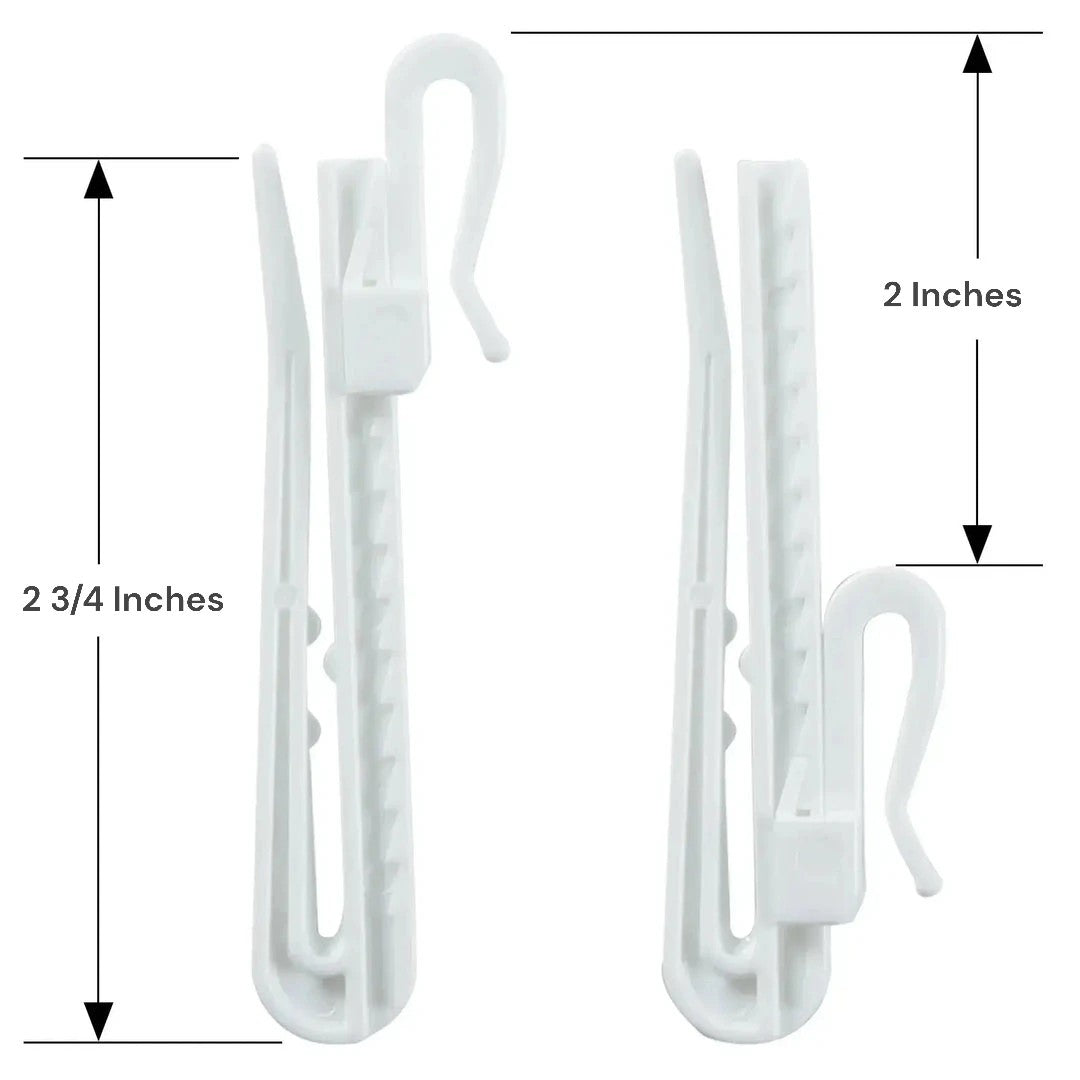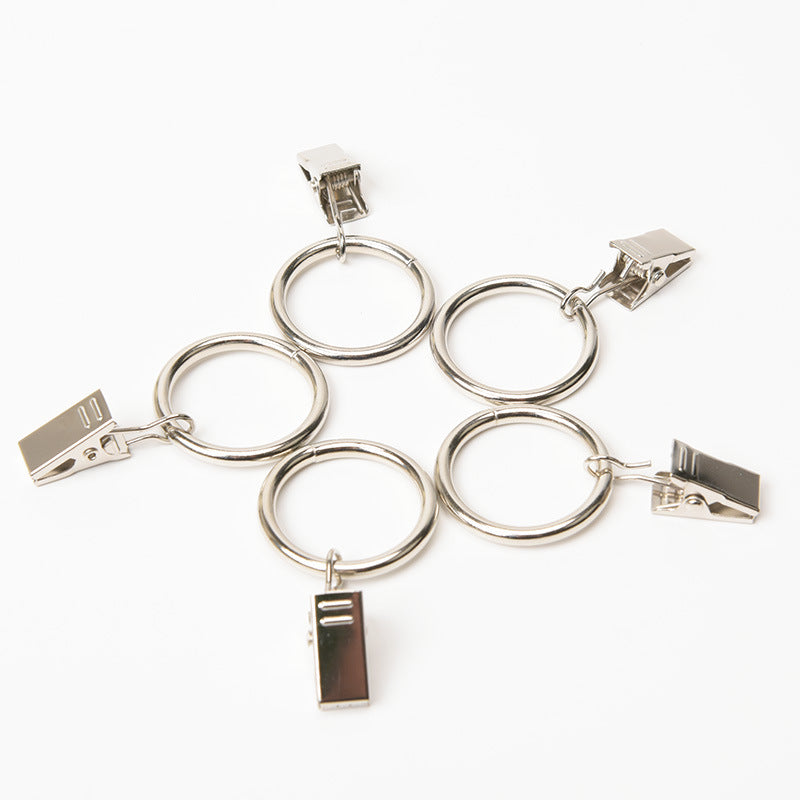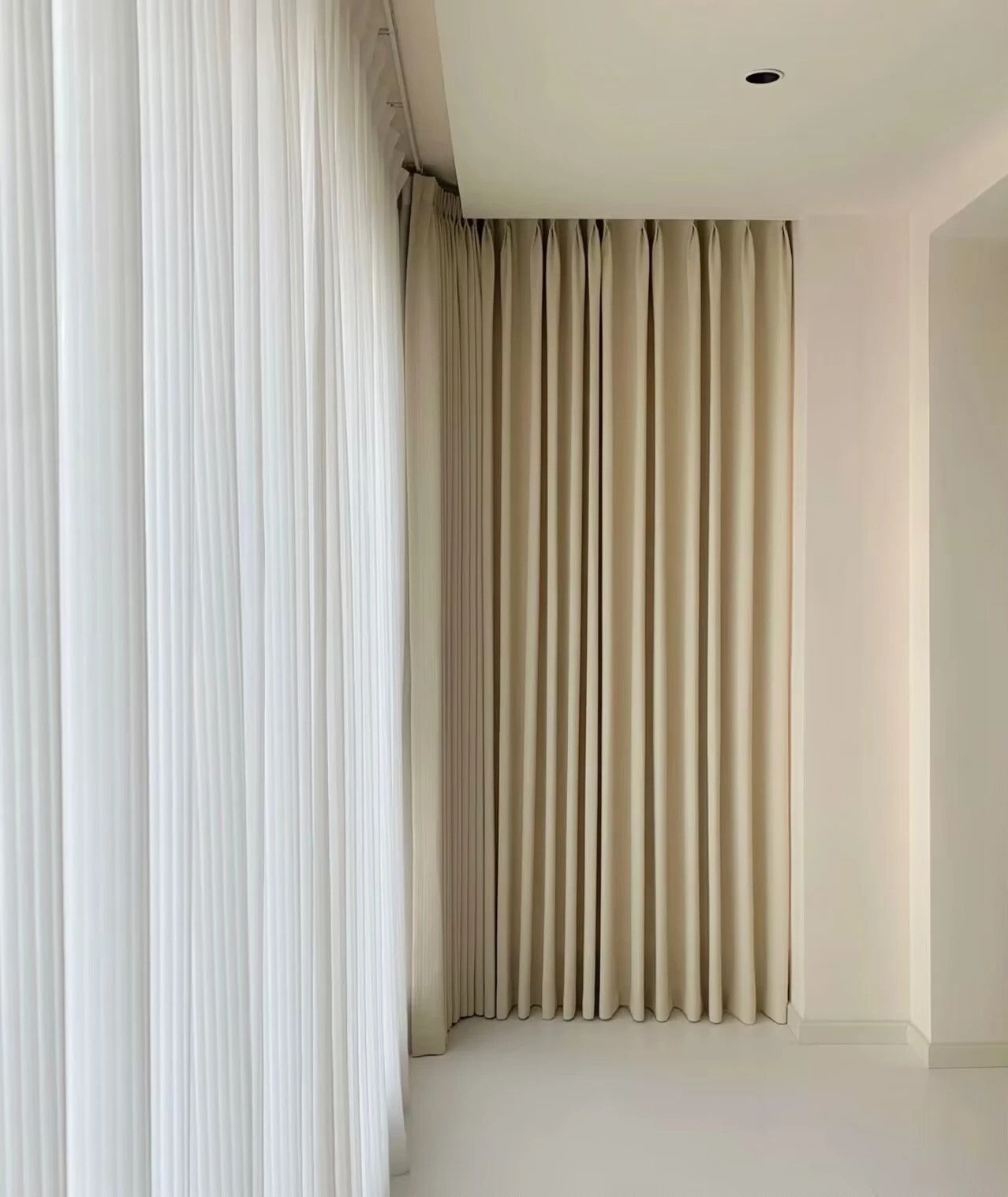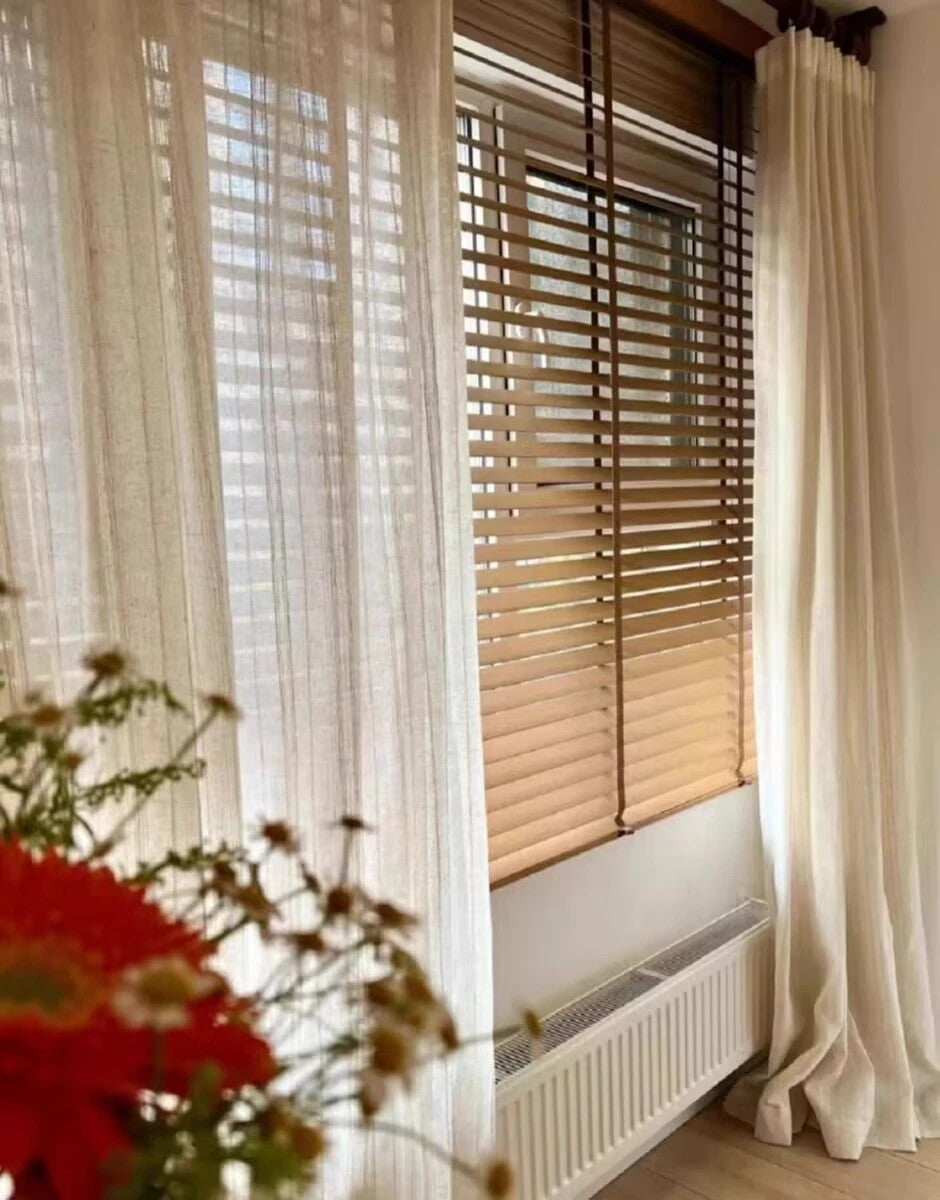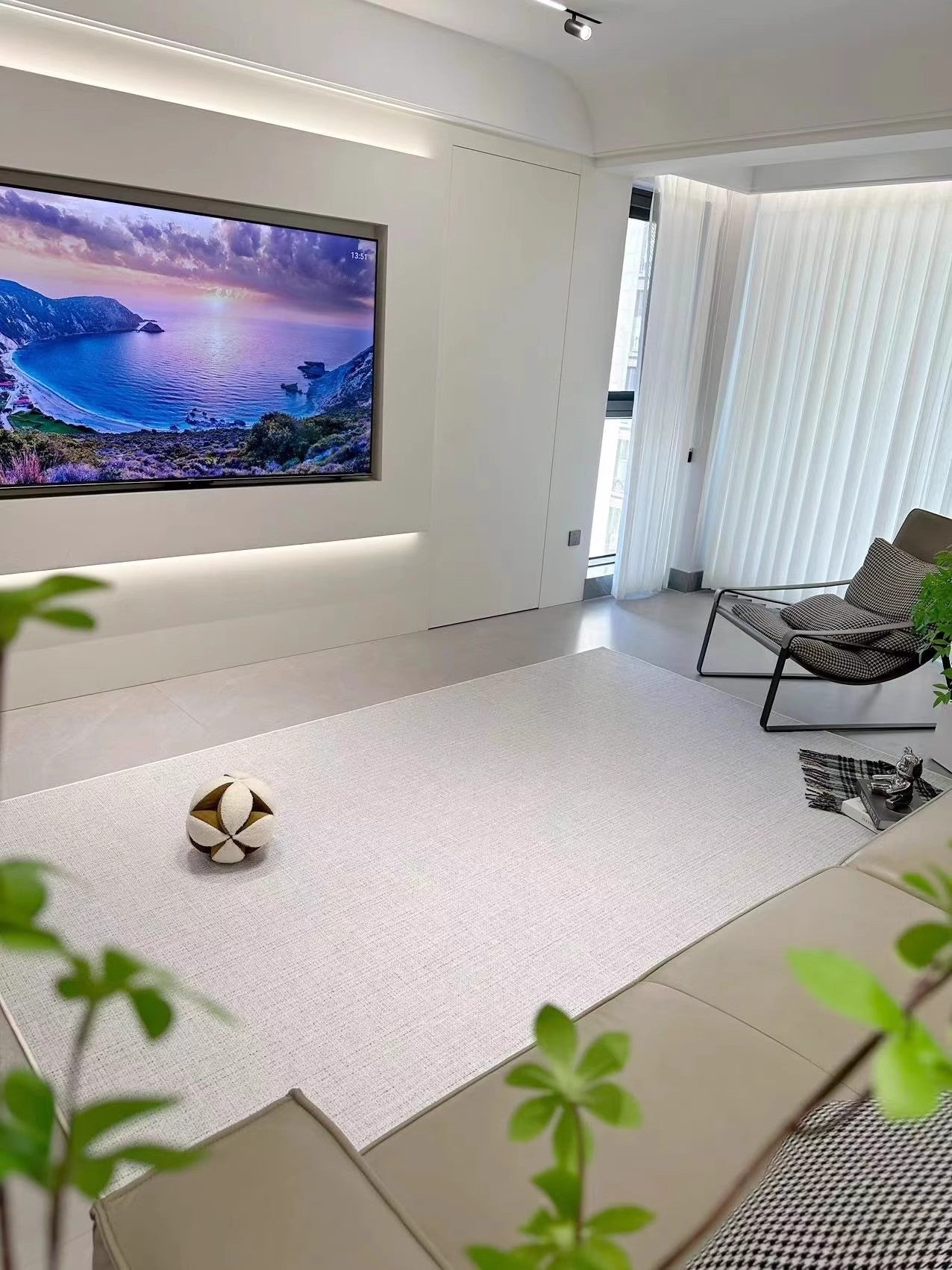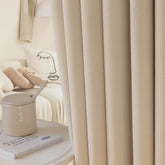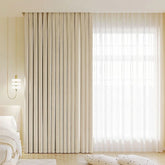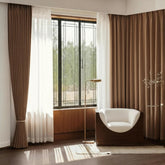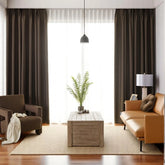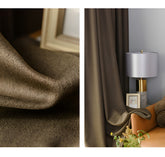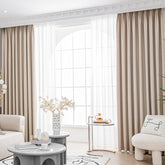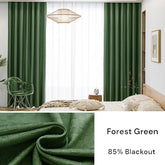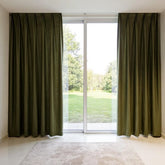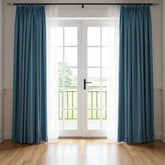¿Cuándo Usar Cortinas vs. Persianas?
Las cortinas y persianas son tratamientos de ventana populares que ofrecen diferentes ventajas según sus necesidades. Entender las diferencias entre cortinas y persianas puede ayudarle a tomar una decisión informada para su hogar. En este artículo, compararemos cortinas y persianas en términos de privacidad, control de la luz, estética, y proporcionaremos una guía completa de compra para ayudarle a elegir la opción adecuada para sus ventanas.
Puntos clave:
- Las cortinas y persianas ofrecen diferentes ventajas para los tratamientos de ventanas.
- Las cortinas añaden atractivo estético y pueden personalizarse para que coincidan con tu diseño interior.
- Las persianas son ideales para la privacidad y el control de la luz, con varios estilos para elegir.
- Considera el espacio y factores prácticos al decidir entre cortinas y persianas.
- Consideraciones de diseño y temas específicos pueden influir en tu elección.
- Utiliza nuestra guía de compra completa para encontrar el tratamiento de ventana perfecto para tus necesidades.
Cortinas: perfectas para añadir atractivo estético
Las cortinas son una opción versátil para el tratamiento de ventanas que puede mejorar el atractivo estético de cualquier habitación. Vienen en una amplia gama de estilos, telas, colores y patrones, lo que te permite personalizar el aspecto de tus ventanas para que coincida con tu diseño interior. Las cortinas ofrecen los beneficios de añadir suavidad, textura e interés visual a tu espacio. Pueden usarse como punto focal o como un elemento complementario a tu decoración existente. Las cortinas también brindan la oportunidad de superponerlas con otros tratamientos para ventanas, como visillos o cenefas, para crear un aspecto único y personalizado.
Ya prefieras cortinas largas y fluidas o paneles a medida, las cortinas ofrecen infinitas posibilidades en cuanto a estilo. Los estilos de cortinas populares incluyen:
- Cortinas con ojales: Estas cortinas tienen anillos metálicos en la parte superior que se deslizan sobre una barra de cortina, creando un aspecto elegante y moderno.
- Cortinas con lazo superior: Estas cortinas tienen lazos de tela en la parte superior que se pasan por una barra de cortina, dándoles un aspecto casual y relajado.
- Cortinas plisadas: Estas cortinas tienen pliegues en la parte superior, añadiendo un toque elegante y sofisticado a cualquier habitación.
- Cortinas transparentes: Estas cortinas ligeras permiten que la luz natural se filtre mientras proporcionan privacidad.

"Las cortinas ofrecen los beneficios de añadir suavidad, textura e interés visual a tu espacio."
Al elegir entre cortinas y otros tratamientos para ventanas, es importante considerar los beneficios que las cortinas aportan a tu decoración. Su versatilidad, opciones de personalización y capacidad para crear un aspecto en capas las convierten en una opción popular para quienes buscan mejorar el atractivo estético de sus ventanas. Ya sea que busques un look audaz y llamativo o una elegancia sutil y atemporal, las cortinas pueden ayudarte a lograr el efecto deseado.
Persianas: ideales para la privacidad y el control de la luz
Las persianas son una opción práctica cuando se trata de garantizar la privacidad y controlar la cantidad de luz que entra en una habitación. Están disponibles en varios estilos, cada uno ofreciendo sus propios beneficios. Echemos un vistazo más de cerca a algunas de las ventajas de las persianas:
- Privacidad: Las persianas proporcionan un alto nivel de privacidad, bloqueando eficazmente la vista desde el exterior. Ya sea que vivas en una calle concurrida o simplemente valores tu privacidad, las persianas pueden ofrecer el aislamiento que deseas.
- Control de la Luz: Con las persianas, tienes la flexibilidad de ajustar la cantidad de luz natural que entra en tu espacio. Simplemente subiendo o bajando las persianas, puedes controlar fácilmente el brillo y crear el ambiente deseado.
- Apariencia Limpia y Estilizada: Las persianas ofrecen un aspecto limpio y estilizado a tus ventanas. Son perfectas para estéticas modernas y minimalistas, proporcionando una apariencia elegante y sin desorden.
Cuando se trata de privacidad y control de la luz, las persianas son difíciles de superar. Ofrecen una solución práctica que te permite personalizar la cantidad de luz y privacidad en tu habitación. Ya sea que prefieras persianas enrollables, romanas o celulares, hay un estilo que puede adaptarse perfectamente a tus necesidades.

Estilos de Persianas
| Estilo de sombra | Beneficios |
|---|---|
| Roller Shades | Fácil de operar, diseño elegante, varias opciones de tela |
| Persianas Romanas | Apariencia elegante, telas suaves y texturizadas disponibles |
| Persianas celulares | Eficiencia energética, excelente aislamiento, opciones de filtrado de luz y oscurecimiento |
Las persianas proporcionan una apariencia limpia y estilizada a tus ventanas, haciéndolas adecuadas para estéticas modernas y minimalistas. Se pueden ajustar fácilmente para permitir la entrada de luz natural o bloquearla por completo, dándote control sobre tu privacidad y la cantidad de luz solar en tu espacio.
Cuando se trata de elegir entre cortinas y persianas, la privacidad y el control de la luz son factores importantes a considerar. Las persianas ofrecen una solución práctica que combina funcionalidad con diseño. Su apariencia limpia, características ajustables y variedad de estilos las convierten en una opción popular para muchos propietarios.
Cortinas vs Persianas: Consideraciones de Espacio
Al decidir entre cortinas y persianas, es esencial considerar el espacio disponible alrededor de tus ventanas. El tamaño y la distribución de tu habitación, así como el tipo de ventana que tienes, pueden influir en qué opción es más adecuada para tus necesidades.
Para espacios pequeños o ventanas ubicadas cerca de una pared u objeto, las persianas suelen ser una opción más práctica. Requieren menos espacio para operar y se pueden ajustar fácilmente para controlar la luz y proporcionar privacidad. Esto las hace ideales para apartamentos compactos o habitaciones con espacio limitado.
Por otro lado, si tienes espacio suficiente a ambos lados de tu ventana, las cortinas pueden ser una excelente manera de llenar el espacio vacío en la pared y añadir profundidad visual a tu habitación. Las cortinas también son una opción popular para ventanas grandes, ya que sus paneles de tela pueden crear un aspecto elegante y dramático.
Cortinas vs Persianas para Ventanas Estrechas y Altas
Cuando se trata de ventanas estrechas, tanto las cortinas como las persianas pueden ser opciones adecuadas. Sin embargo, es importante considerar la funcionalidad y la estética que deseas lograr.
Para ventanas estrechas, las persianas pueden proporcionar un aspecto elegante y aerodinámico que complementa la forma de la ventana. Se pueden montar dentro del marco de la ventana o directamente sobre el vidrio, maximizando el espacio disponible.
Si prefieres cortinas para tus ventanas estrechas, considera usar paneles más cortos que cuelguen justo debajo del alféizar. Esto permite que las cortinas enmarquen la ventana sin abrumar el espacio.
En cuanto a las ventanas altas, las persianas suelen ser una opción más práctica. Su naturaleza ajustable facilita el control de la luz y la privacidad en áreas de difícil acceso. Sin embargo, si buscas hacer una declaración de diseño audaz, las cortinas de piso a techo pueden añadir una sensación de grandeza y elegancia a tu espacio.
| Consideraciones de espacio | Cortinas | Estores |
|---|---|---|
| Espacios pequeños o ventanas cerca de paredes/objetos | No es ideal debido a la necesidad de espacio para operar | Requieren menos espacio y se pueden ajustar fácilmente |
| Espacio amplio a ambos lados de la ventana | Pueden llenar el espacio vacío en la pared y añadir profundidad visual | Proporcionan un aspecto elegante y aerodinámico |
| Ventanas estrechas | Paneles más cortos pueden enmarcar la ventana | Se pueden montar dentro del marco de la ventana |
| Ventanas altas | Añade una sensación de grandeza y elegancia | Más práctico para el control de luz y privacidad |

En última instancia, la elección entre cortinas y persianas debe tener en cuenta las consideraciones de espacio de tu habitación y ventana en particular. Considera el espacio disponible, la funcionalidad y la estética deseada para tomar la decisión correcta. Tanto las cortinas como las persianas tienen sus ventajas únicas, y seleccionar la opción adecuada dependerá de tus necesidades y preferencias específicas.
Consideraciones prácticas: ¿Cortinas o persianas?
Al decidir entre cortinas y persianas para tus ventanas, es importante considerar factores prácticos que pueden afectar tu vida diaria. Exploremos algunas consideraciones clave para ayudarte a tomar una decisión informada:
Control de calor:
Tanto las cortinas como las persianas ofrecen cierto grado de control térmico para su espacio. Sin embargo, las cortinas hechas con telas pesadas, como terciopelo o opciones con forro térmico, son especialmente efectivas para aislar su habitación y regular la temperatura. Estas cortinas pueden ayudar a mantener su espacio fresco en verano y cálido en invierno, reduciendo la necesidad de aire acondicionado o calefacción excesivos. Las persianas, por otro lado, especialmente las celulares con su diseño aislante de panal, también son conocidas por sus propiedades de eficiencia energética y pueden ayudar a bloquear el calor durante los días calurosos de verano.
Aislamiento:
Además del control del calor, las cortinas y persianas pueden ofrecer beneficios de aislamiento. Las cortinas, especialmente las hechas con materiales más gruesos, pueden ayudar a reducir las corrientes de aire y mantener su hogar acogedor durante los meses fríos. La capa adicional de tela actúa como una barrera, evitando que el aire frío se filtre y que el aire cálido escape. Las persianas, aunque no tan efectivas como las cortinas en términos de aislamiento, aún pueden proporcionar cierto grado de aislamiento térmico, particularmente cuando se instalan como opciones ajustadas que crean un sello contra el marco de la ventana.
"Las cortinas hechas con telas pesadas pueden proporcionar aislamiento y ayudar a regular la temperatura de la habitación."
Reducción de ruido:
Si la reducción de ruido es una prioridad para usted, las cortinas son una excelente opción. Las telas gruesas y densas de las cortinas absorben las ondas sonoras, ayudando a minimizar el ruido externo y crear un ambiente más silencioso. Esto es particularmente ventajoso si vive en un vecindario ruidoso o cerca de una calle transitada. Por otro lado, las persianas, especialmente las celulares, también pueden proporcionar cierto grado de reducción de ruido al atrapar el sonido entre las capas de la estructura de panal, actuando como un amortiguador contra la intrusión de ruido externo.
Fácil Mantenimiento:
Cuando se trata de mantenimiento fácil, las persianas suelen tener la ventaja. Las persianas, especialmente las hechas con materiales sintéticos como vinilo o poliéster, son relativamente fáciles de limpiar y requieren poco mantenimiento. Un desempolvado regular o un paño húmedo suave suele ser suficiente para mantener las persianas con buen aspecto. Por otro lado, las cortinas, especialmente las de telas delicadas o diseños intrincados, pueden requerir más cuidado y atención. Las cortinas de seda o terciopelo, por ejemplo, pueden necesitar limpieza profesional para mantener su apariencia y textura.

| Consideraciones | Cortinas | Estores |
|---|---|---|
| Control de calor | ✔️ Aislamiento efectivo con telas pesadas | ✔️ Eficiente energéticamente, especialmente las persianas celulares |
| Aislamiento | ✔️ Proporciona aislamiento adicional contra corrientes de aire | ✔️ Ofrece cierto grado de aislamiento térmico |
| Reducción de ruido | ✔️ Absorbe las ondas sonoras para un ambiente más silencioso | ✔️ Proporciona cierto nivel de reducción de ruido |
| Fácil mantenimiento | 🔘 Puede requerir más cuidado y limpieza profesional | ✔️ Fácil de limpiar con un desempolvado regular o un paño húmedo |
Considere estos factores prácticos al decidir entre cortinas y persianas para asegurarse de elegir la opción que mejor se adapte a sus necesidades y estilo de vida.
Consideraciones de diseño: cortinas vs persianas
Al elegir entre cortinas y persianas, es importante considerar la estética de diseño que deseas lograr en tu espacio. Las cortinas ofrecen una amplia gama de posibilidades de diseño, permitiéndote jugar con telas, colores, patrones y estilos para crear un aspecto personalizado. Pueden servir como piezas destacadas o elementos de acento que complementen tu tema de diseño general. Las cortinas tienen la capacidad de añadir un toque de elegancia, suavidad y textura a tus ventanas, mejorando el atractivo visual de cualquier habitación.
Por otro lado, las persianas son conocidas por sus líneas limpias y apariencia minimalista, lo que las hace perfectas para estilos de diseño contemporáneos y modernos. Proporcionan un aspecto elegante y discreto que se integra perfectamente en la decoración interior. Las persianas pueden crear una sensación de simplicidad y sofisticación en tu espacio, permitiendo que otros elementos de diseño sean los protagonistas. Con su apariencia estilizada, las persianas funcionan bien en espacios donde se desea un aspecto limpio y sin desorden.
Ya sea que elijas cortinas o persianas, ambos pueden usarse como elementos de acento para realzar tu tema de diseño general. Las cortinas pueden combinarse con visillos o cenefas para crear capas y añadir profundidad a tus ventanas. Las persianas pueden combinarse con cortinas o drapeados para proporcionar privacidad adicional o control de luz cuando sea necesario. Al seleccionar cuidadosamente el tratamiento de ventana adecuado, puedes lograr un diseño cohesivo y visualmente atractivo que refleje tu estilo personal.

Tabla: Consideraciones de diseño entre cortinas y persianas
| Cortinas | Estores | |
|---|---|---|
| Posibilidades de diseño | Amplia gama de telas, colores, patrones y estilos | Líneas limpias y apariencia minimalista |
| Personalización | Puede servir como puntos focales o elementos de acento | Se integra perfectamente en la decoración interior |
| Estética | Añade suavidad y textura a las ventanas | Crea un aspecto elegante y discreto |
| Opciones de capas | Puede combinarse con visillos o cenefas | Puede combinarse con cortinas o drapeados |
En última instancia, la elección entre cortinas y persianas para consideraciones de diseño depende de tus preferencias personales y del tema de diseño específico que quieras lograr en tu espacio. Considera el estilo, la atmósfera y la estética general que deseas crear, y selecciona el tratamiento de ventana que mejor complemente tu visión.
Elegir el tratamiento de ventana adecuado: una guía de compra
Cuando se trata de realzar tus ventanas, encontrar el equilibrio perfecto entre estilo y funcionalidad es clave. En esta guía de compra, exploraremos los diferentes tipos de cortinas y persianas disponibles, discutiremos sus características y beneficios, y proporcionaremos algunas ideas para tratamientos de ventanas para inspirarte.
Cortinas
Las cortinas son una opción clásica para el tratamiento de ventanas que puede añadir un toque de elegancia a cualquier habitación. Vienen en varios estilos, incluyendo bolsillo para barra, ojales y con pestañas, lo que te permite elegir el que mejor se adapte a tus preferencias estéticas. Las cortinas están disponibles en una amplia gama de telas, patrones y colores, dándote la libertad de crear un aspecto personalizado.
Al seleccionar cortinas, considera el nivel de privacidad y control de la luz que deseas. Las cortinas transparentes pueden dejar entrar la luz natural mientras proporcionan algo de privacidad, mientras que las cortinas más pesadas pueden bloquear la luz y asegurar privacidad completa. Además, las cortinas pueden ayudar con el aislamiento, manteniendo tu espacio más fresco en verano y más cálido en invierno.
Estores
Si prefieres un aspecto más estilizado y minimalista, las persianas pueden ser la opción ideal para ti. Están disponibles en diferentes estilos, como persianas enrollables, persianas romanas y persianas celulares. Las persianas ofrecen un excelente control de la luz, permitiéndote ajustar la cantidad de luz solar que entra en tu espacio. También son una gran opción para la privacidad, ya que se pueden cerrar completamente para bloquear la vista desde el exterior.
Una de las ventajas de las persianas es su eficiencia energética. Las persianas celulares, en particular, tienen una estructura única de panal que atrapa aire y proporciona aislamiento, ayudando a reducir el consumo de energía y bajar las facturas de servicios. Las persianas también son fáciles de mantener, ya que se pueden limpiar simplemente con un paño húmedo.
Ideas para tratamientos de ventanas
No importa qué opción elijas, hay infinitas posibilidades para crear tratamientos de ventana hermosos y funcionales. Considera superponer cortinas y persianas para mayor profundidad y versatilidad. Usa cortinas como un color de acento para complementar tu decoración existente, o elige persianas en tonos neutros para un aspecto más discreto. No temas mezclar y combinar diferentes estilos y texturas para crear un tratamiento de ventana único y personalizado.
Recuerda, al elegir entre cortinas y persianas, es esencial considerar tus necesidades específicas, como privacidad, control de la luz e aislamiento. Ten en cuenta la estética de tu espacio y el tema de diseño general que deseas lograr. Al considerar estos factores y explorar diferentes opciones, puedes encontrar el tratamiento de ventana perfecto que combine estilo y funcionalidad.

Conclusión
Después de explorar las diferencias entre cortinas y persianas, está claro que no hay una respuesta definitiva a la pregunta de cuál es mejor. Ambas opciones ofrecen ventajas únicas que deben considerarse según tus necesidades y preferencias específicas.
Las cortinas son una excelente opción si buscas añadir atractivo estético a tu espacio. Con una amplia gama de estilos, telas y opciones de personalización, las cortinas pueden mejorar el aspecto y la sensación general de cualquier habitación. También ofrecen la oportunidad de crear un aspecto en capas combinándolas con otros tratamientos para ventanas.
Por otro lado, las persianas sobresalen en privacidad y control de la luz. Ofrecen una apariencia limpia y estilizada, lo que las hace ideales para estéticas modernas y minimalistas. Las persianas también brindan beneficios prácticos como eficiencia energética y facilidad de mantenimiento.
Al final, la decisión entre cortinas y persianas se reduce a las preferencias personales, las necesidades específicas de tu espacio y la estética de diseño deseada. Considera los factores discutidos en este artículo y sopesa los pros y los contras para tomar una decisión informada que se adapte a tu estilo y requisitos funcionales. Ya sea que elijas cortinas, persianas o una combinación de ambas, el tratamiento adecuado para tus ventanas puede transformar tu espacio y mejorar su funcionalidad.
Preguntas frecuentes
¿Cuándo debo usar cortinas vs. persianas?
La elección entre cortinas y persianas depende de tus necesidades y preferencias específicas. Las cortinas son excelentes para añadir atractivo estético y opciones de personalización, mientras que las persianas destacan en privacidad y control de la luz. Considera los factores discutidos en el artículo para tomar una decisión informada.
¿Cuáles son los beneficios de las cortinas?
Las cortinas ofrecen versatilidad, con una amplia gama de estilos, telas, colores y patrones para elegir. Pueden mejorar el atractivo estético de cualquier habitación, añadir suavidad y textura, y combinarse con otros tratamientos de ventana para un aspecto único.
¿Cuáles son los beneficios de las persianas?
Las persianas son ideales para la privacidad y el control de la luz. Vienen en varios estilos y se pueden ajustar fácilmente para permitir la entrada de luz natural o bloquearla por completo. Las persianas también ofrecen una apariencia limpia y estilizada, lo que las hace adecuadas para estilos de diseño modernos.
¿Qué debo considerar en términos de espacio al elegir entre cortinas y persianas?
La cantidad de espacio disponible alrededor de tus ventanas puede influir en la elección entre cortinas y persianas. Si tienes espacio limitado o la ventana está cerca de una pared u objeto, las persianas son una mejor opción. Si tienes espacio amplio, las cortinas pueden usarse para llenar el espacio vacío en la pared y crear un impacto visual.
¿Qué factores prácticos debo considerar al elegir cortinas o persianas?
Considera factores como el control del calor, aislamiento, reducción de ruido y mantenimiento. Las cortinas hechas con telas pesadas proporcionan aislamiento y absorción de sonido. Las persianas, especialmente las celulares, son energéticamente eficientes y más fáciles de limpiar y mantener.
¿En qué se diferencian las cortinas y las persianas en términos de consideraciones de diseño?
Las cortinas ofrecen más posibilidades de diseño con su amplia gama de telas, colores, patrones y estilos. Pueden usarse como piezas destacadas o como elementos de acento. Las persianas tienen una apariencia limpia y minimalista, lo que las hace adecuadas para estilos de diseño contemporáneos y modernos.
¿Cuál es la conclusión cuando se trata de cortinas vs. persianas?
No hay una respuesta única para todos. Ambas opciones tienen sus propias ventajas y consideraciones. Las cortinas ofrecen atractivo estético y personalización, mientras que las persianas destacan en privacidad y control de la luz. En última instancia, la elección depende de tus preferencias personales y las necesidades específicas de tu espacio.



